Most fishing lures are designed to either imitate the natural prey of a particular fish species, or attract attention through noise, color and erratic movement.
The lure you will need will depend on your method of fishing and the type of fish you wish to catch.
The packaging on most lures will tell you the species and conditions the lure was designed for. Brightly colored fishing lures can attract fish in murky water, whereas the same lure in clear water might look unnatural. The most valuable information for fishing beginners usually comes from the marina, or from other anglers returning from the water you intend to fish.
Here are some common lures you are likely to encounter, and their intended uses:
Buzzbait
These fishing lures are designed to churn and send vibration through the water. Buzzbaits work well for bringing fish out of thick cover, where they may not be able to see your lure. This is a topwater bait, best used in times when fish are most aggressive. Some anglers believe buzzbaits attract larger fish than other lures.

Crankbait
The crankbait style of fishing lure is designed to imitate a fish, while targeting a certain depth in the water. This is a good lure for beginning anglers, because all you really need to do is cast and reel it in. A small piece of plastic protrudes from the front of a crankbait. The size and angle of this feature determines how deep the lure will dive as you retrieve it. To run the lure as deep as possible, reel slowly and point the tip of your rod down. If it is running too deep, lift your rod and speed it up. Crankbaits can be used to catch bass, walleye, sauger, pike and muskie. This fishing lure tends to get caught in vegetation, so it is best to avoid using one in heavily weeded areas. These lures come in a variety of colors and intended depths, so it is not unusual for an angler to have several styles of crankbaits in their tackle box.
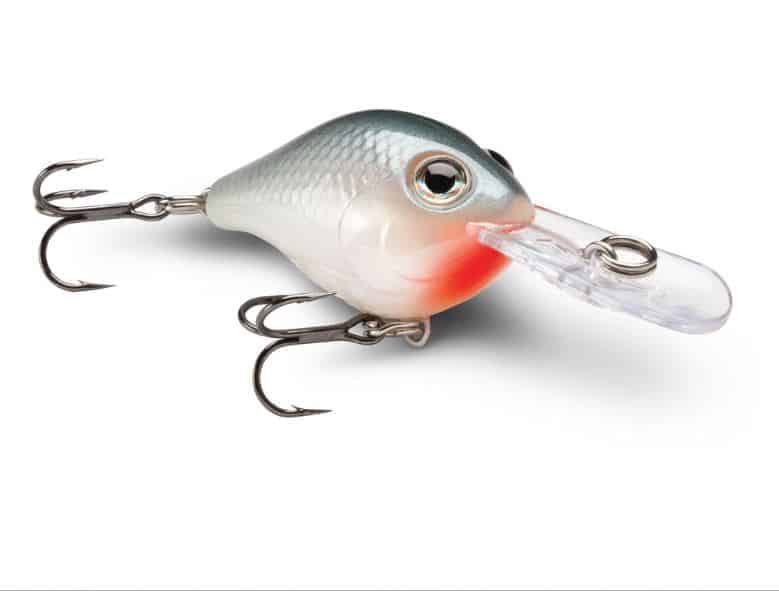
Jig
A jig is essentially a hook with a weighted, often painted, head. They come in a variety of sizes, the heavier ones being for larger, deep water, fish that sometimes reside in strong currents. It is designed to be used with an up and down movement, when the angler is directly over a fish. Jigging is used successfully to catch walleye and similar species. Jigs are sometimes used in combination with live bait, like leeches, minnows or night crawlers.
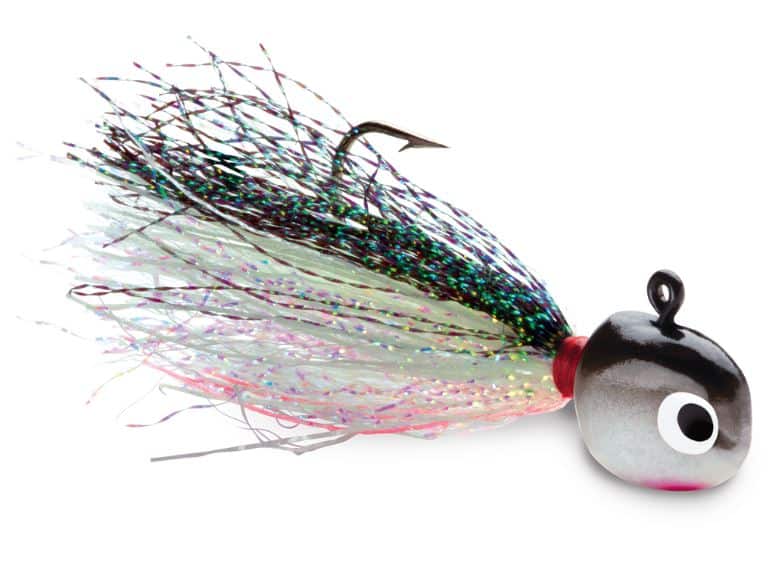
Spinnerbait
A spinnerbait is a lure with a small spoon shaped propeller attached on an arm to create movement and reflect light. A spinner bait may have one or two bales, the single blade type tends to run deeper. The positioning of the metal arm above the hook makes this a good lure to use in areas of heavy vegetation. This is another lure that comes in several sizes and configurations. Spinnerbaits are good at attracting predatory fish. They are versatile lures that can be used in most bass fishing situations, and it can be retrieved in a variety of ways. You can run them across the surface, or retrieve them in a slow, bouncing, manner. While traditionally associated with bass fishing, spinnerbaits can also be used to catch muskie and northern pike.
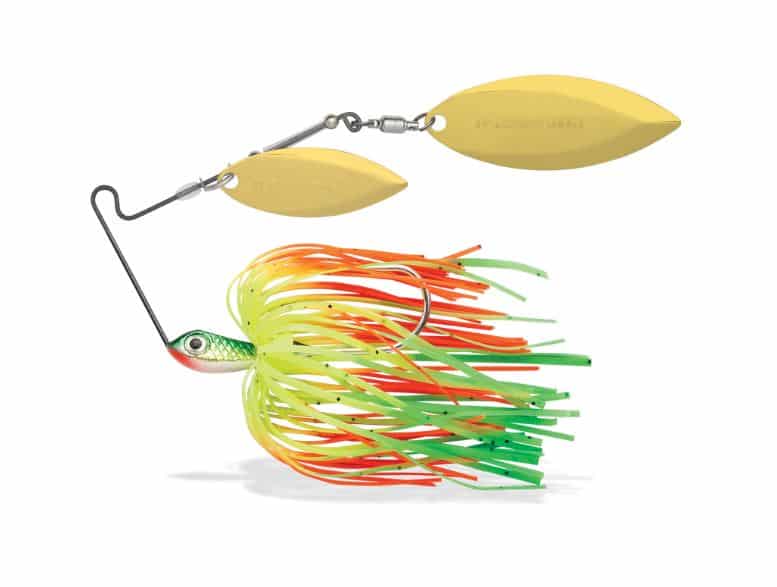
Popper
A popper type fishing lure is retrieved on top of the water in a quick, jerking, manner. The concave front of a popper makes noise and disturbs the water, drawing out aggressive fish from below. (A Hula Popper is a popper type lure, wearing what looks like a little Hawaiian skirt.)
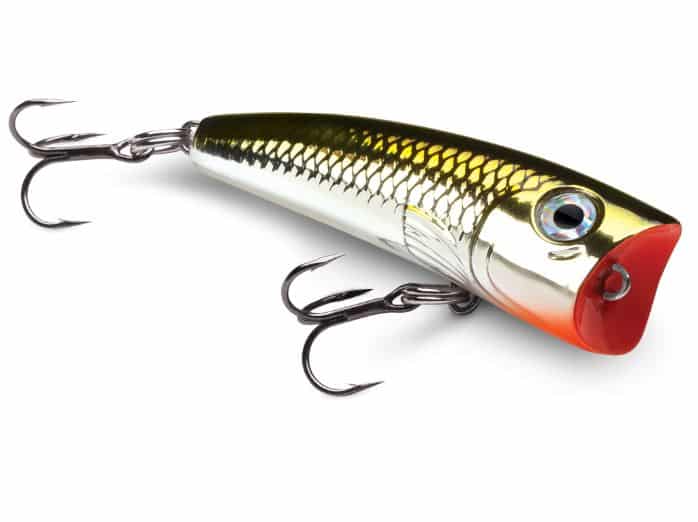
Spoon
The spoon is about as simple and reliable as a fishing lure can get. It consists of a concave piece of metal and a single treble hook. As it moves through the water, it flounders around, mimicking a small fish. The spoon is one of the earliest and most reliable fishing lures out there. They work well for trolling, pulling your lure behind a boat, and also casting and retrieving from shore. Typically the retrieve is done in a slow and steady motion, but a start and stop retrieve can be used to impersonate an injured fish. The weight of the spoon lets you get some pretty good distance out of your cast. Spoons equipped with a weedguard, a small wire running from the top of the spoon to the tip of the hook, are ideal for fishing through the weeds. This is the lure that I used most as a kid, and I still enjoy they simplicity and adaptability of a good spoon.
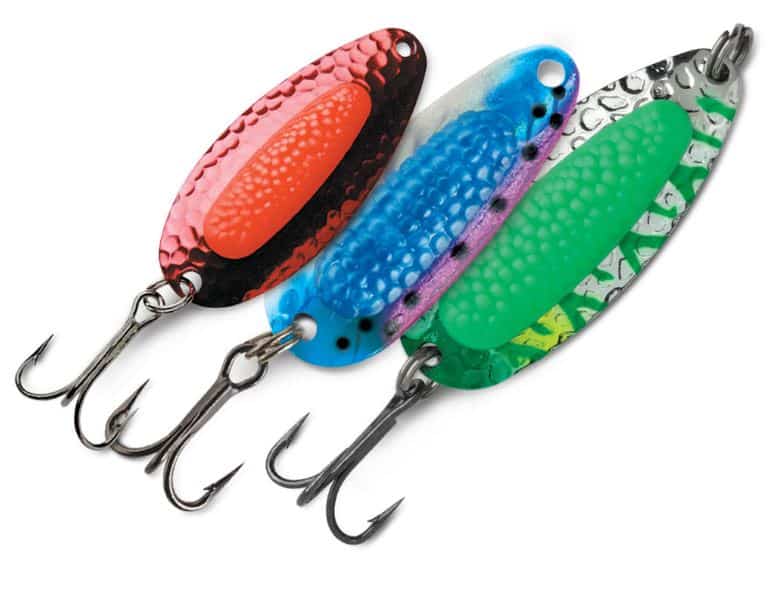 Spoon Type Lure
Spoon Type LureFishing lures come in an endless variety of shapes, colors and sizes, but this covers some of the most common artificial fishing lures. It is certainly enough to get you started, so pick up a pole and head to the nearest body of water.
